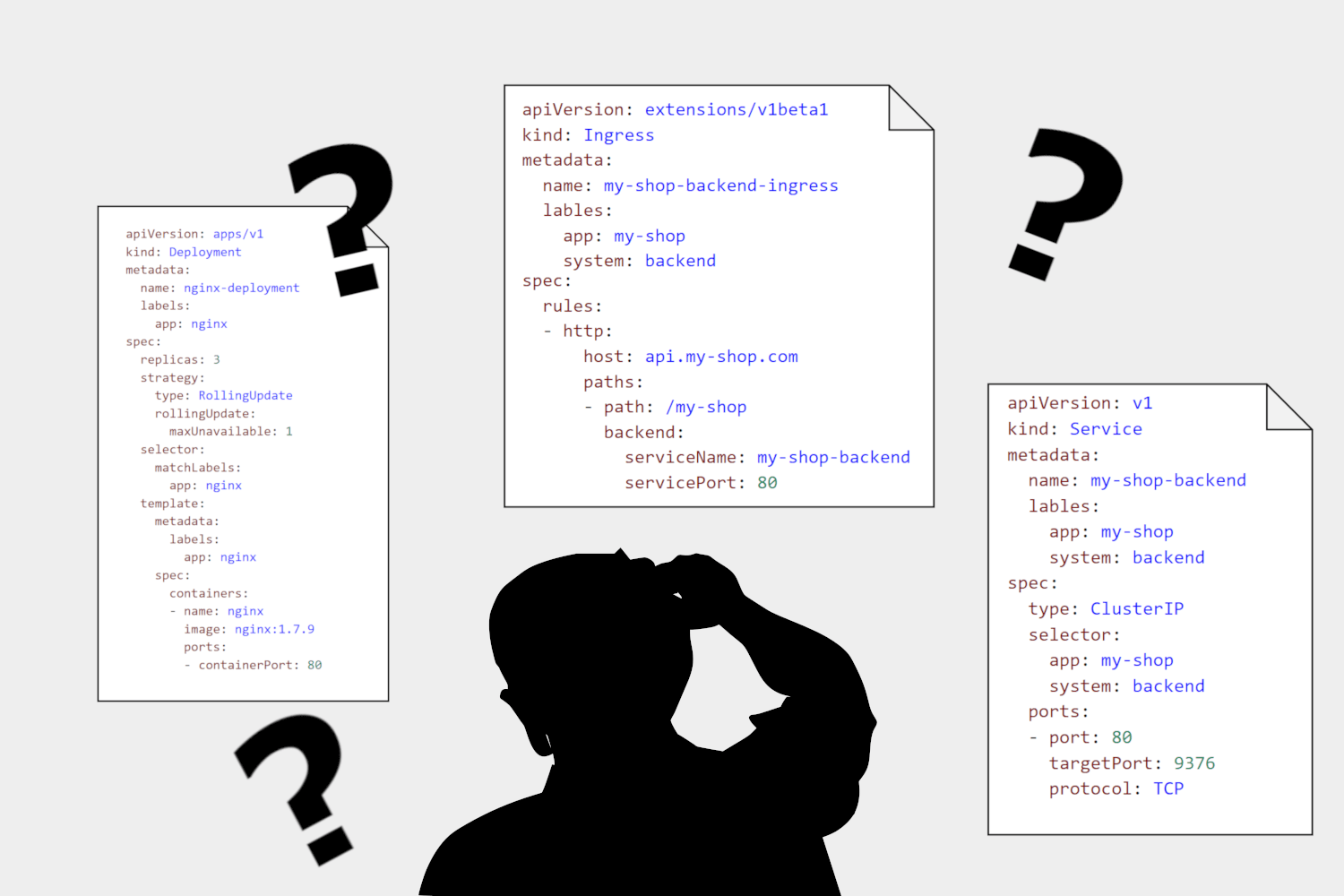Kubernetes manifests simplified
3 min read

Creating Kubernetes manifests
Kubernetes has become the de facto container orchestration system and is used in a wide variety of use cases. It provides a lot of configuration options right out of the box, and to configure it, we create tons of YAML manifests.
Kubernetes has a lot of different objects such as pods, replica sets, deployments, secrets, etc, each of which has several different configuration options. This extensive customizability can act as a double-edged sword. On one hand, all the customizations mean that it satisfies a huge number of use cases, and on another hand, it becomes very easy to misconfigure your manifests.

These misconfigurations can lead to several undesired outcomes from critical security vulnerabilities, to application failure, or even the leaking of sensitive data which can be accessed by anyone. Detecting these misconfigurations, however, can be time-consuming, and would require a plethora of different tools.
Engineers can use several different tools which can be used to generate YAML templates, validate them, and inspect the final state of a Kubernetes cluster, before applying the manifests to a production environment. However, these involve using a combination of multiple tools, each of which would have a separate learning curve.
Even with the use of many different tools, it is still possible to get a certain configuration wrong, by guessing what could be a valid configuration. These things take time and reduce the real quality of the deployments, something that creates inefficiencies and risks in production, and that is many times passed over to the platform or DevOps engineer that needs to rebuild it to make it work properly.
Monokle, an all-in-one manifests solution
Monokle from the Kubeshop streamlines the process of creating, analyzing, and deploying Kubernetes configurations by providing a unified visual tool for authoring YAML manifests, validating policies, and managing live clusters. It provides a single IDE for all your configuration files, manifests, resources, and cluster management. You can connect your cluster and see its state in real-time.
You can create and use custom YAML templates for different use cases. Monokle has a smart editor which can understand Kubernetes schemas. This makes it easy to create manifests according to the requirements of the application. Another great feature is you can visualize what your manifests will do, how your cluster will be affected, and what resources would be created by Helm and Kustomize.

Monokle will also validate your policies in real-time, which helps in creating the perfect files, without having to debug them for hours. It can also be used to compare resource definitions to understand what changes are introduced when applying new configurations. It uses all existing industry standards and definitions such as Helm and OPA, without creating a new level of abstraction and thus complexity when trying to fix errors.
Monokle provides full-cycle management, from templating to cluster monitoring, so you don't need to use a ton of different tools to create manifests for your Kubernetes applications. It creates a way for teams to work together, adding information, documentation links, and other tools for developers and engineers that are learning to use Kubernetes or are not using them as their primary working tool, and also provides valuable data for experts that quickly need to understand what is happening and generate guardrails.
Conclusion
Monokle provides a powerful tool that helps you create configuration files and manifests for your Kubernetes workloads. It also helps validate all the data inside the IDE itself and also shows a preview of how your cluster can be affected by applying the manifest.